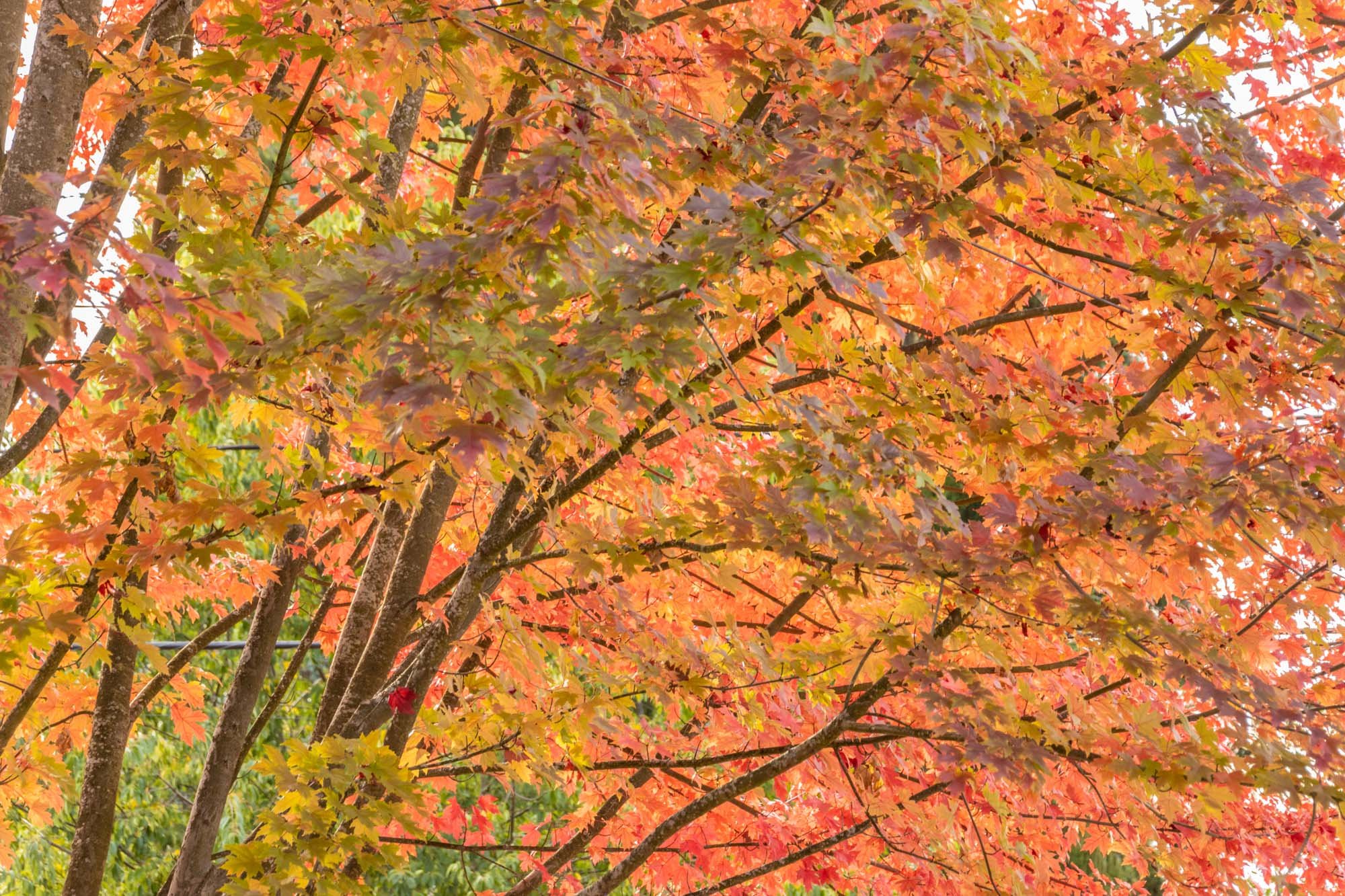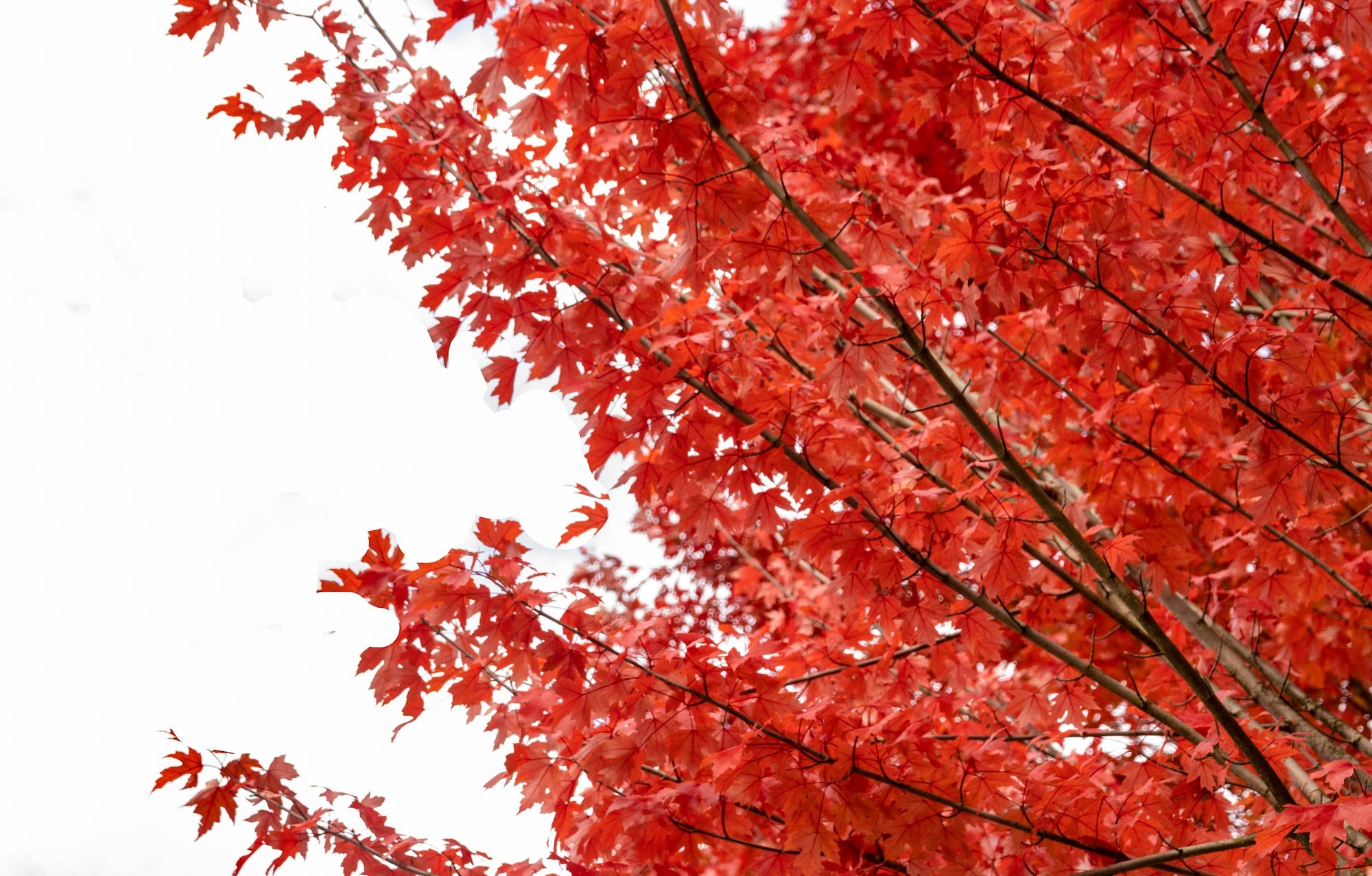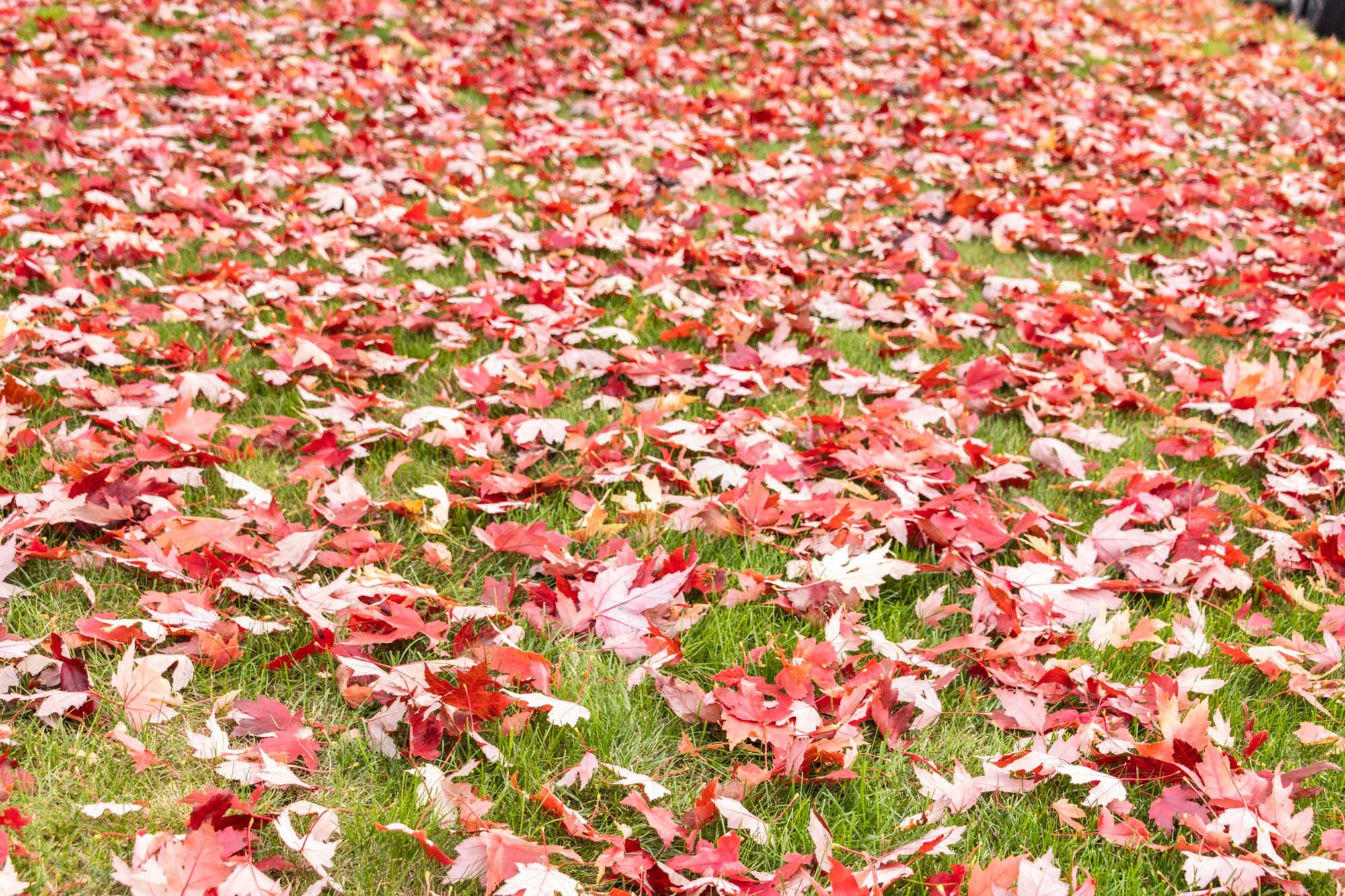Colorful Kuboda and Rhododendron Gardens
I grew up on the east coast in a small city in New York, about an hour north of “the City”, on the Hudson River, and surrounded by the Storm King, Bear and Catskill Mountains. I vividly recall the autumn days where every tree was ablaze in bright red, orange or yellow or a combination of the three. As the season progressed, we had piles and piles of leaves that had fallen from the trees and that gave us hours of pleasure jumping in them, running through them, and scattering those that had just been raked, much to the dismay of our parents.
I also remember my first few autumns in Seattle, missing the intense concentration of colors that I had grown on up with. Over the last 43 years living in the Pacific Northwest, I have grown to appreciate the ever-changing patterns created by mixing palettes of bright autumn colors with the multiple shades of green, creating their own beautiful paintings from the ground upward. Kubota Gardens in South Seattle and the Rhododendron Species Botanical Garden in Federal Way are two places I journeyed to explore this year’s colors.
Hidden in South Seattle, Kubota Garden is a stunning 20 acre landscape that blends Japanese garden concepts with native Northwest plants. Originally founded by Fujitaro Kubota who began merging Japanese design techniques with North American materials. The Gardens are a spectacular setting of hills and valleys, interlaced with streams, waterfalls, ponds, bridges, and rock out-croppings with a rich array of plant material.
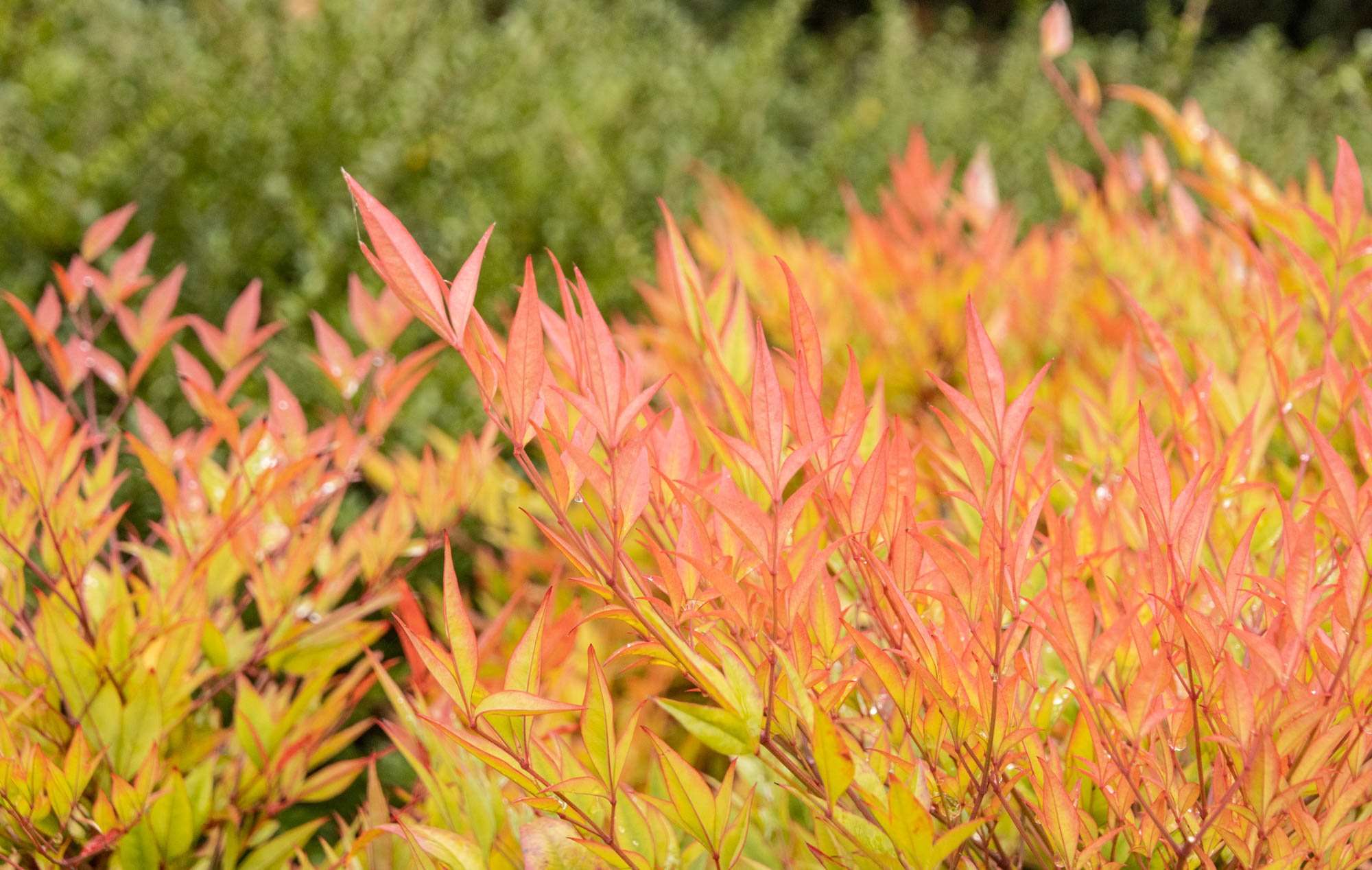
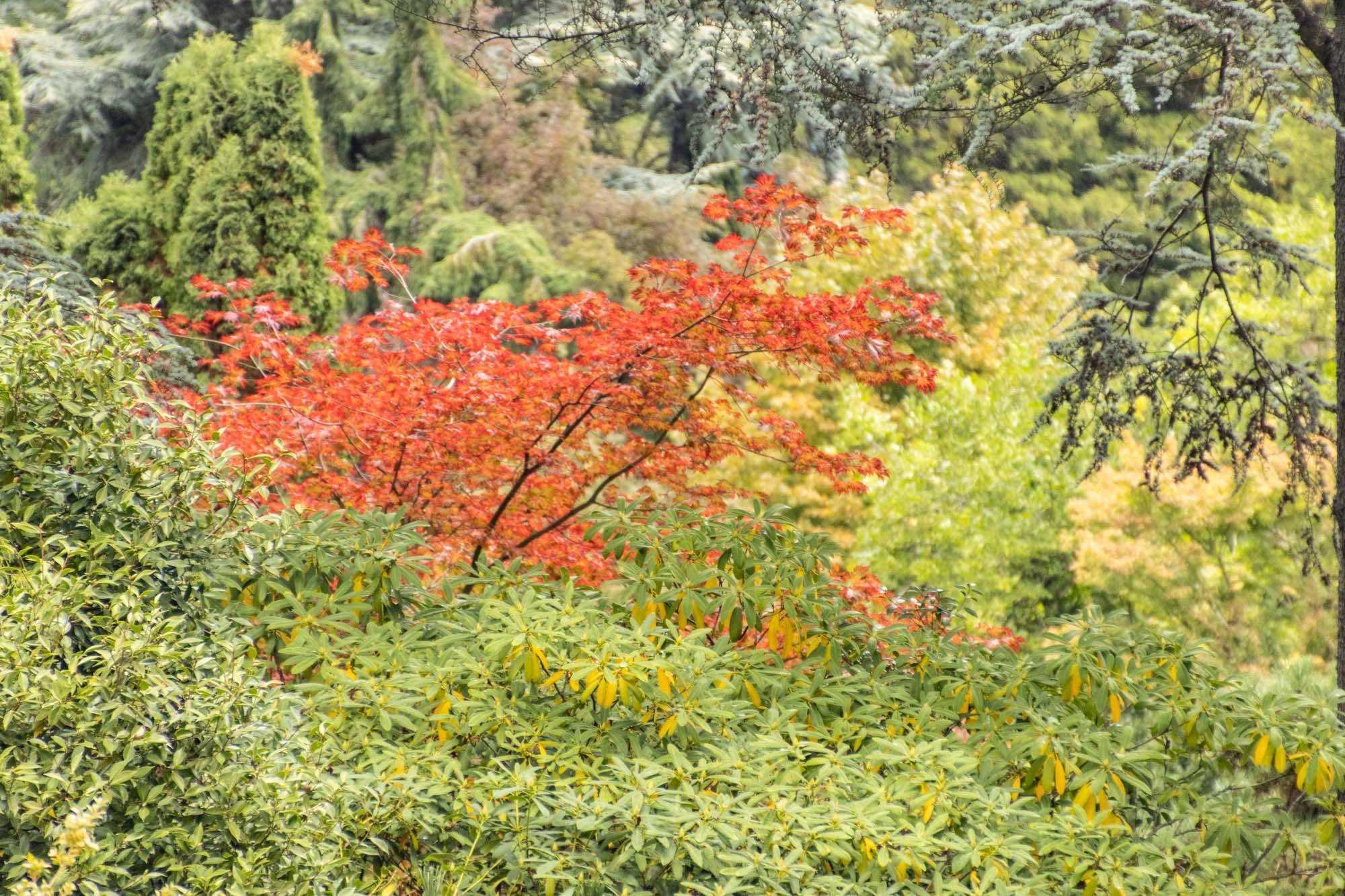
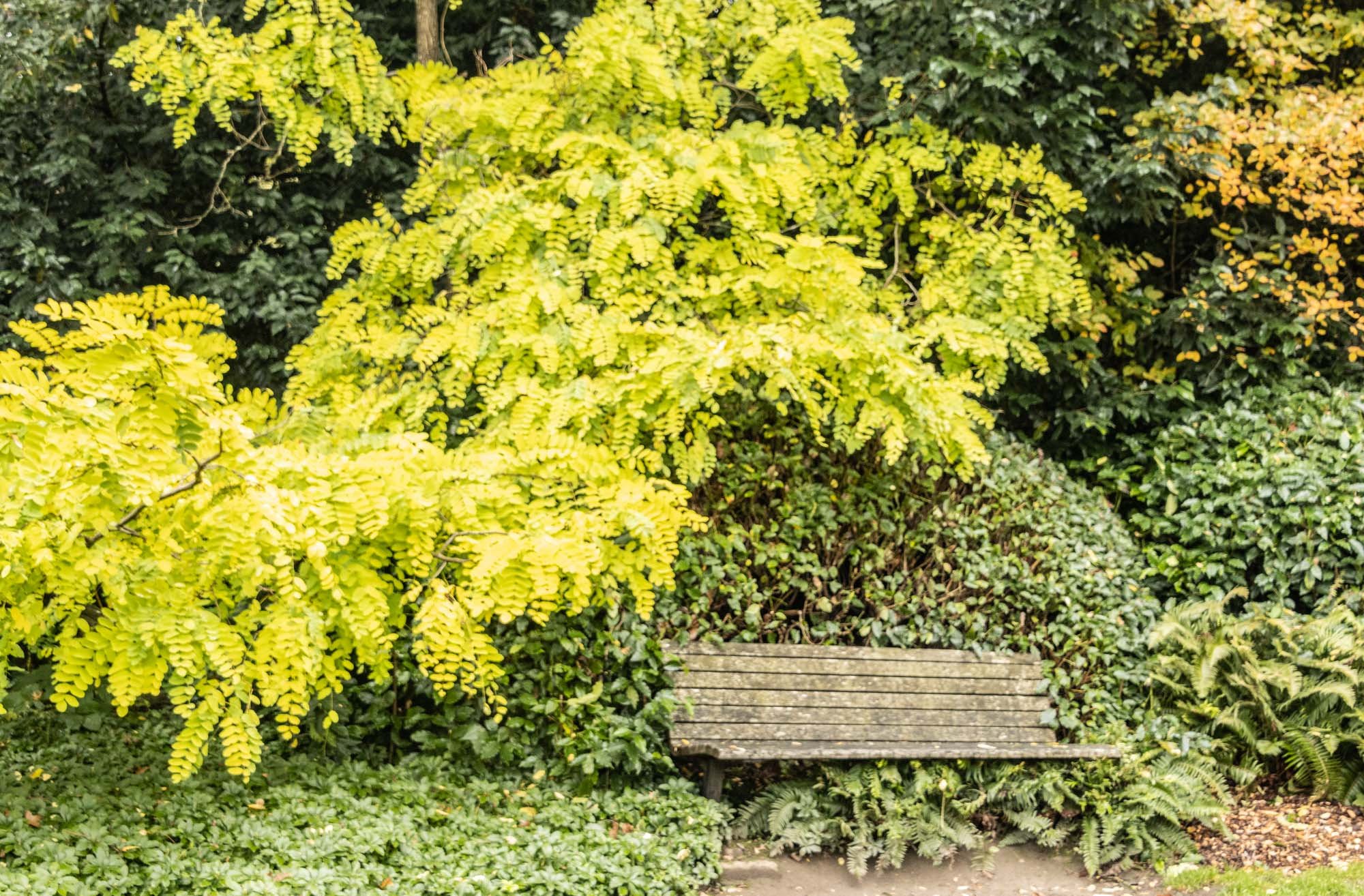
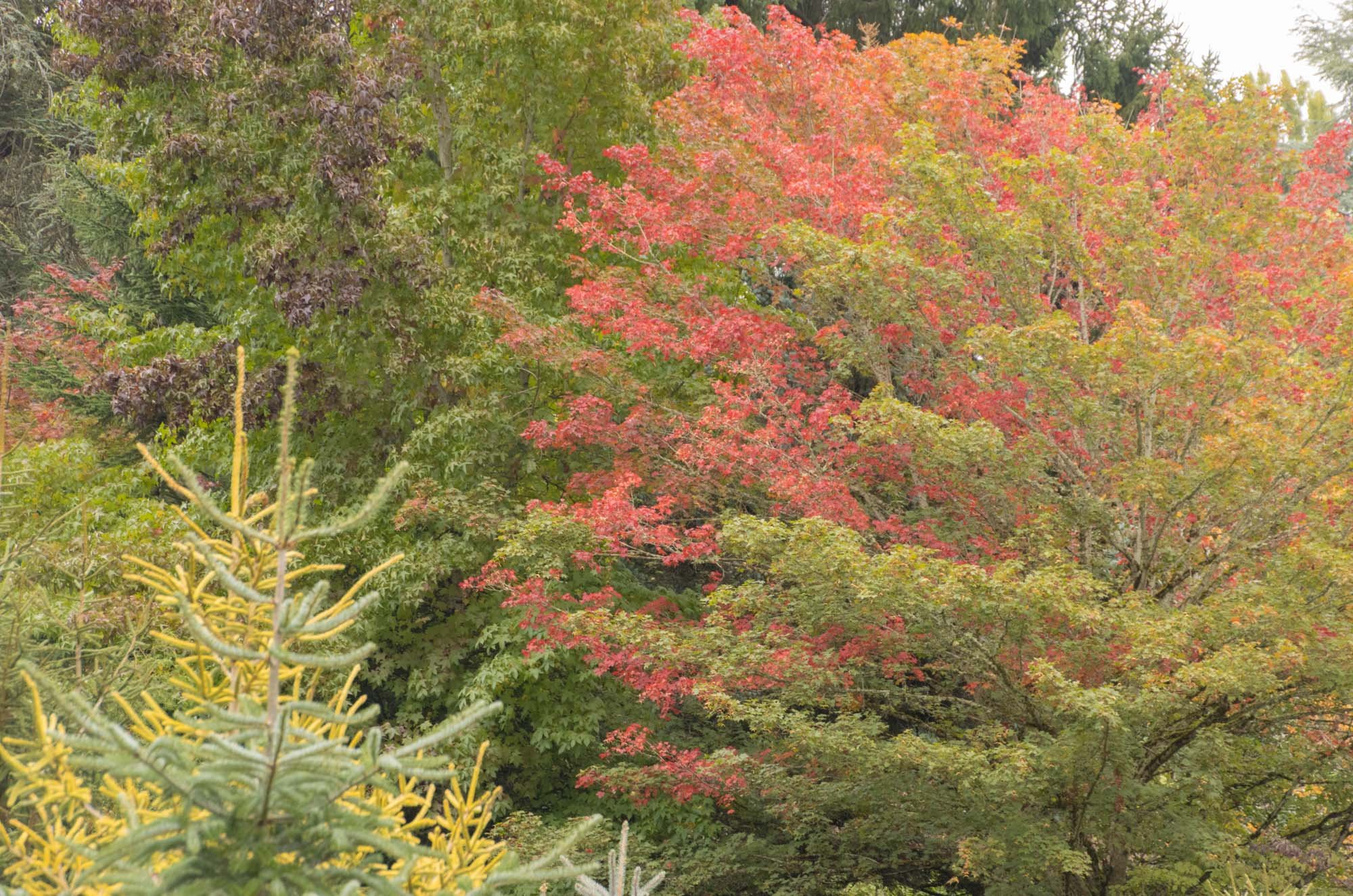
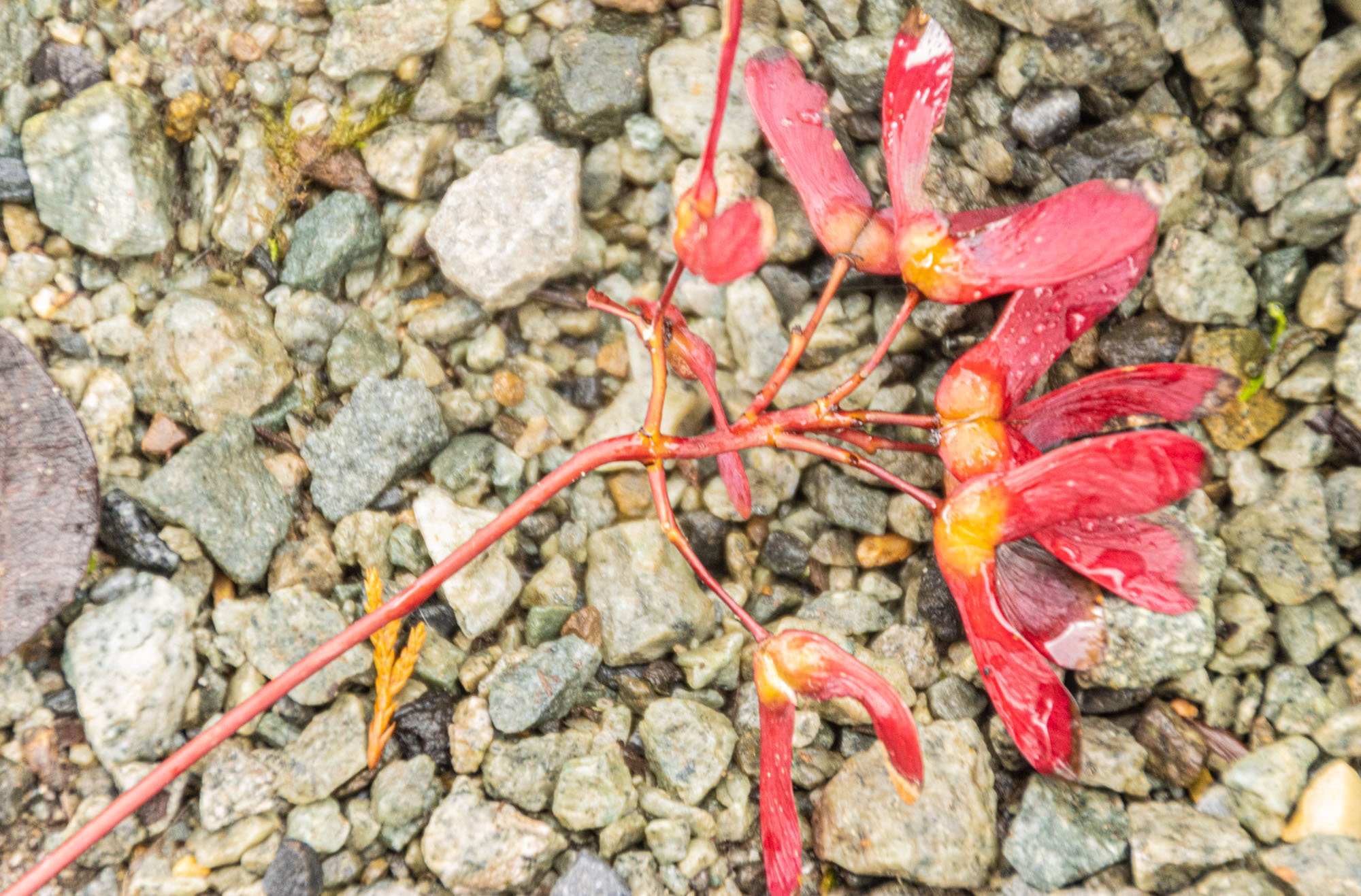
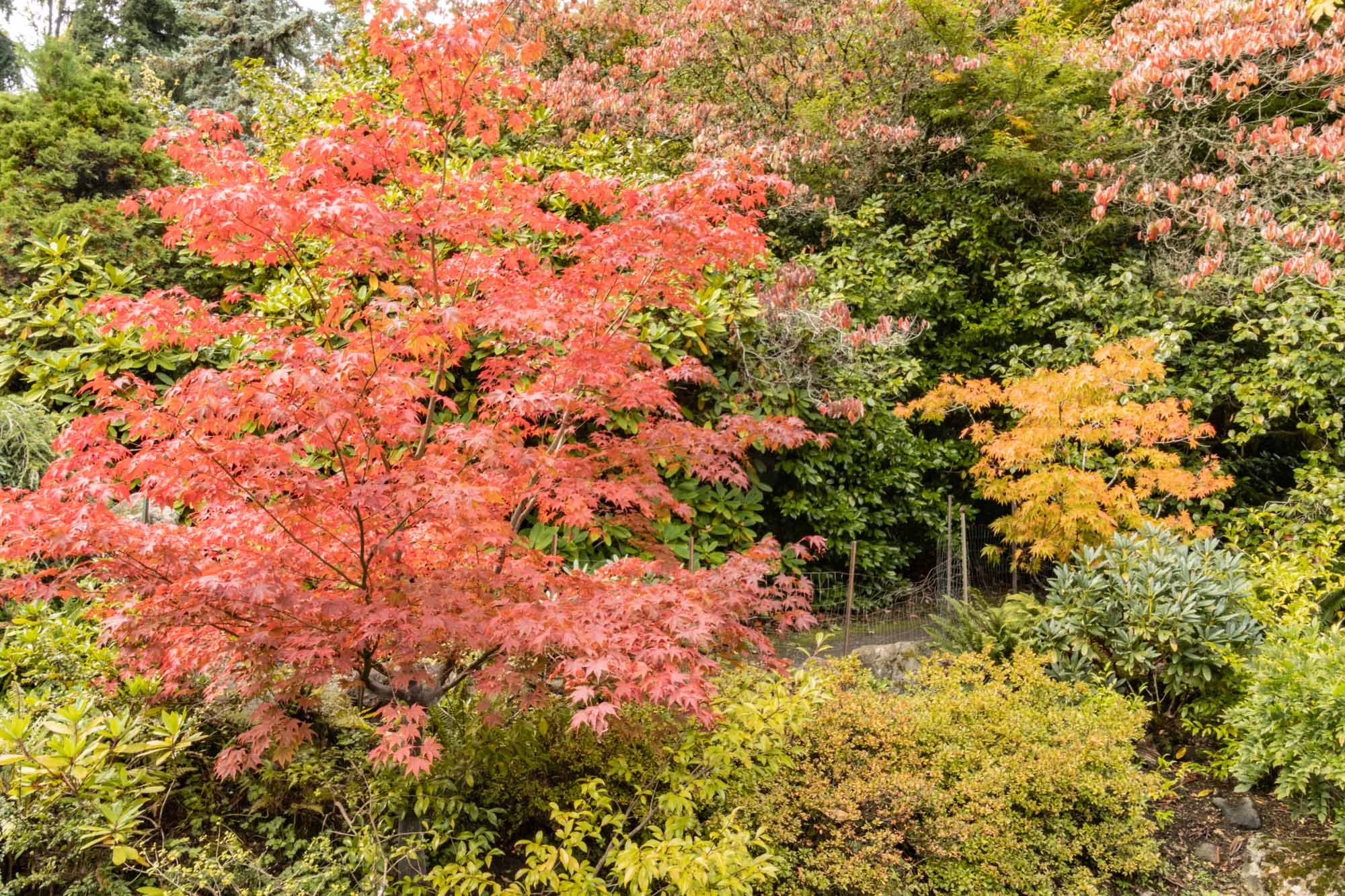
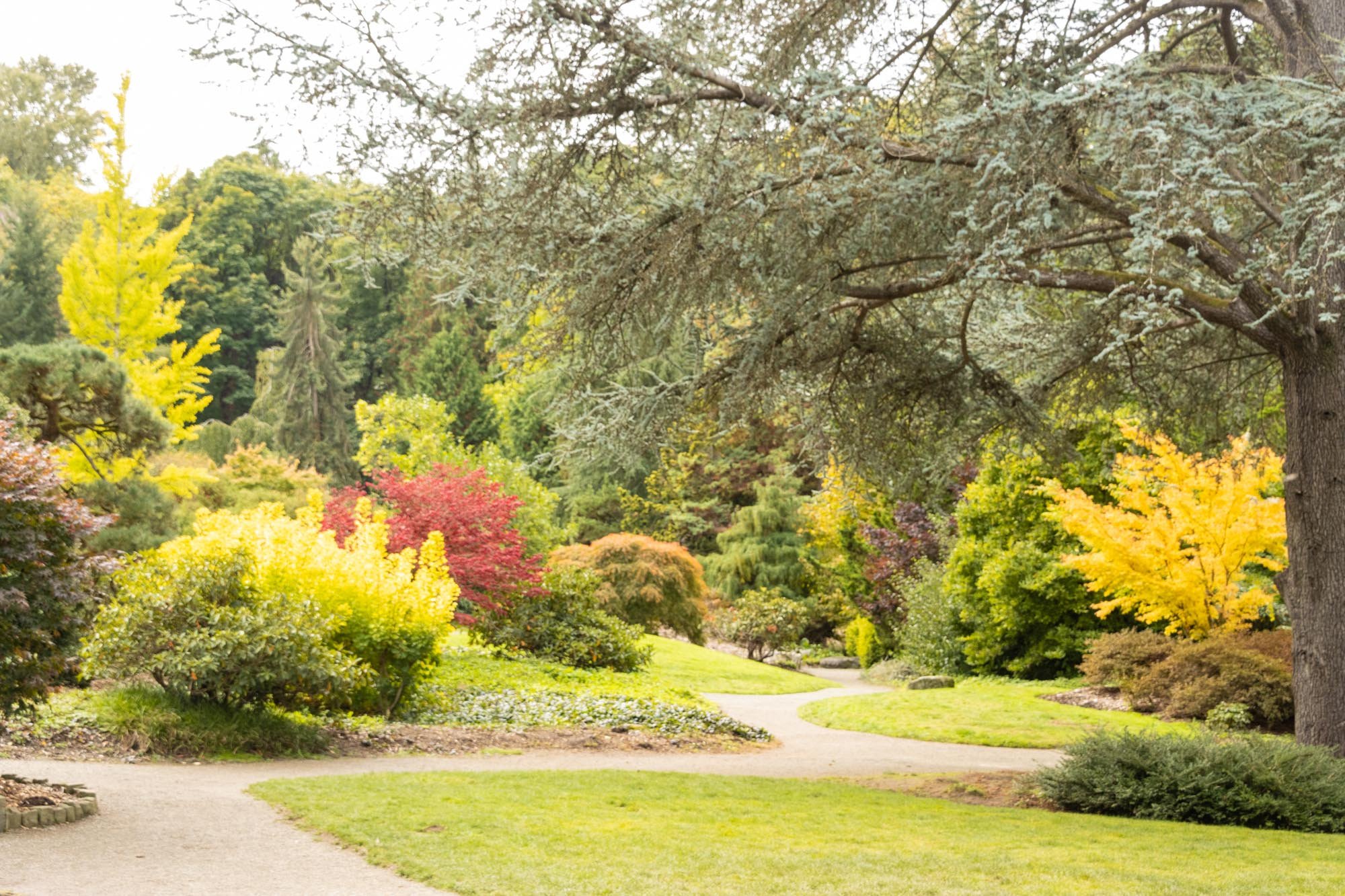
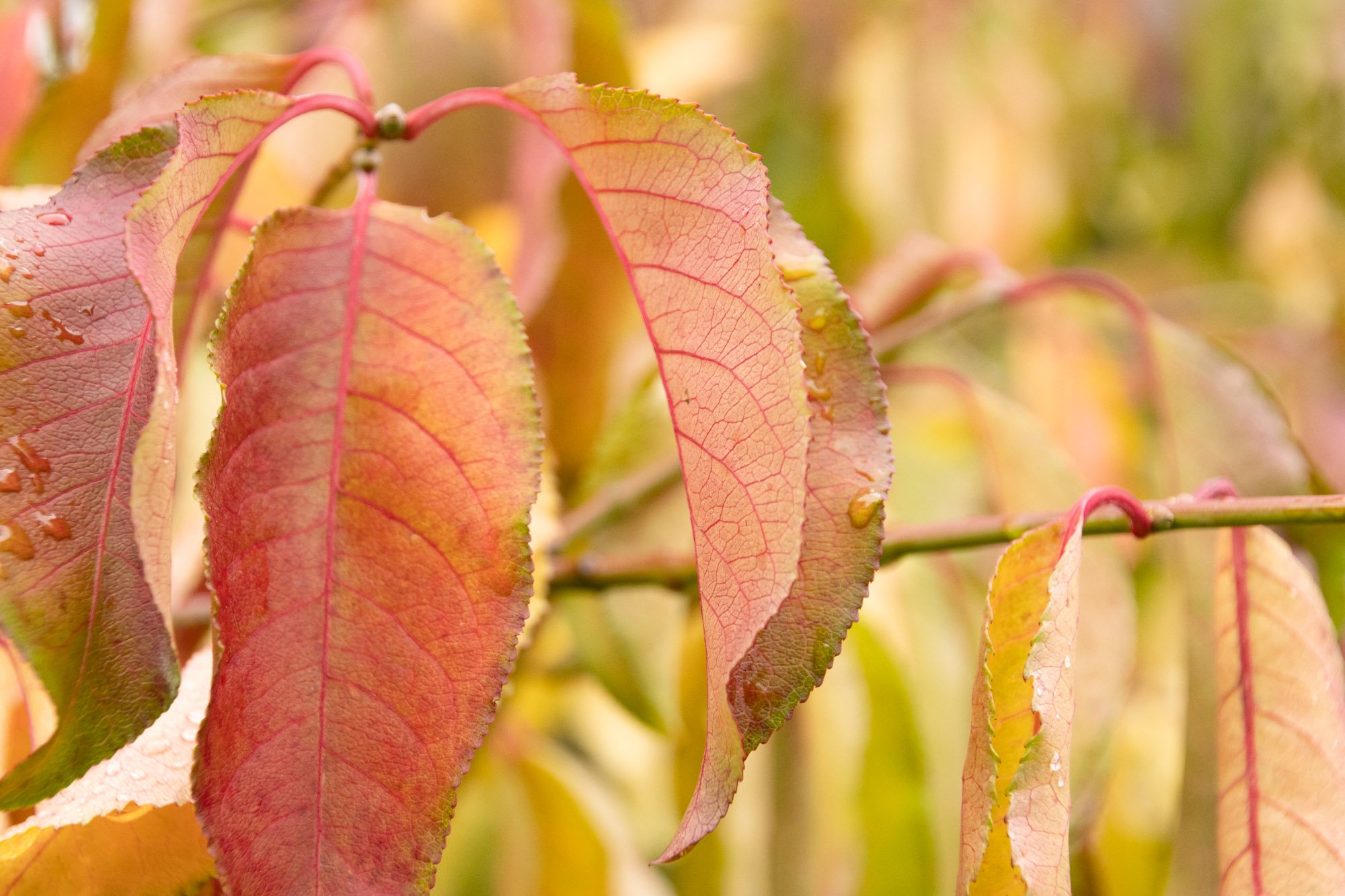
Kubota established the Kubota Gardening Company in 1923, then four years later he purchased his first five acres. As a self-taught gardener he cleared the land, dug ponds and built his garden all on his own. The Kubota family was held at Camp Minidoka in Idaho during the mass incarceration of the Japanese people during World War II, while at the same time Kubota’s son Tom served in the US military and son Tak worked as a civilian instructor in army intelligence schools. Following the war, the Kubota family purchased the remaining garden bringing their total to 20 acres. Fujitaro Kubota passed away in 1974 at age 94. Tom and Tak built the red moon bridge as a memorial to their father. The City of Seattle purchased the Gardens from the Kubota family in 1987, and over the years since, the Kubota Gardens Foundation has continued to develop the Gardens with the addition of new designs and structures.
One might ask why I would go to a rhododendron garden to look at those colors in the fall when rhodies bloom in the spring. I must admit I noticed more species of rhodies than I’ve ever seen and can’t wait to return in the spring. However, scattered among those budding bushes are varying species of maples, alders, viburnum, Douglas fir, hemlock and other native plants. In October and November the bright autumn colors provide a beautiful landscape on whichever of the many paths one wanders. With so many to choose from, it is easy to get confused about where you are, however, while exploring I also felt like I was given a new gift each time my curiosity took over and led me in a new direction.
The Rhododendron Species Botanical Garden shines in every season and exploring it left me with more than I came with. I was well fed with many beautiful offerings for my eyes and my spirit.

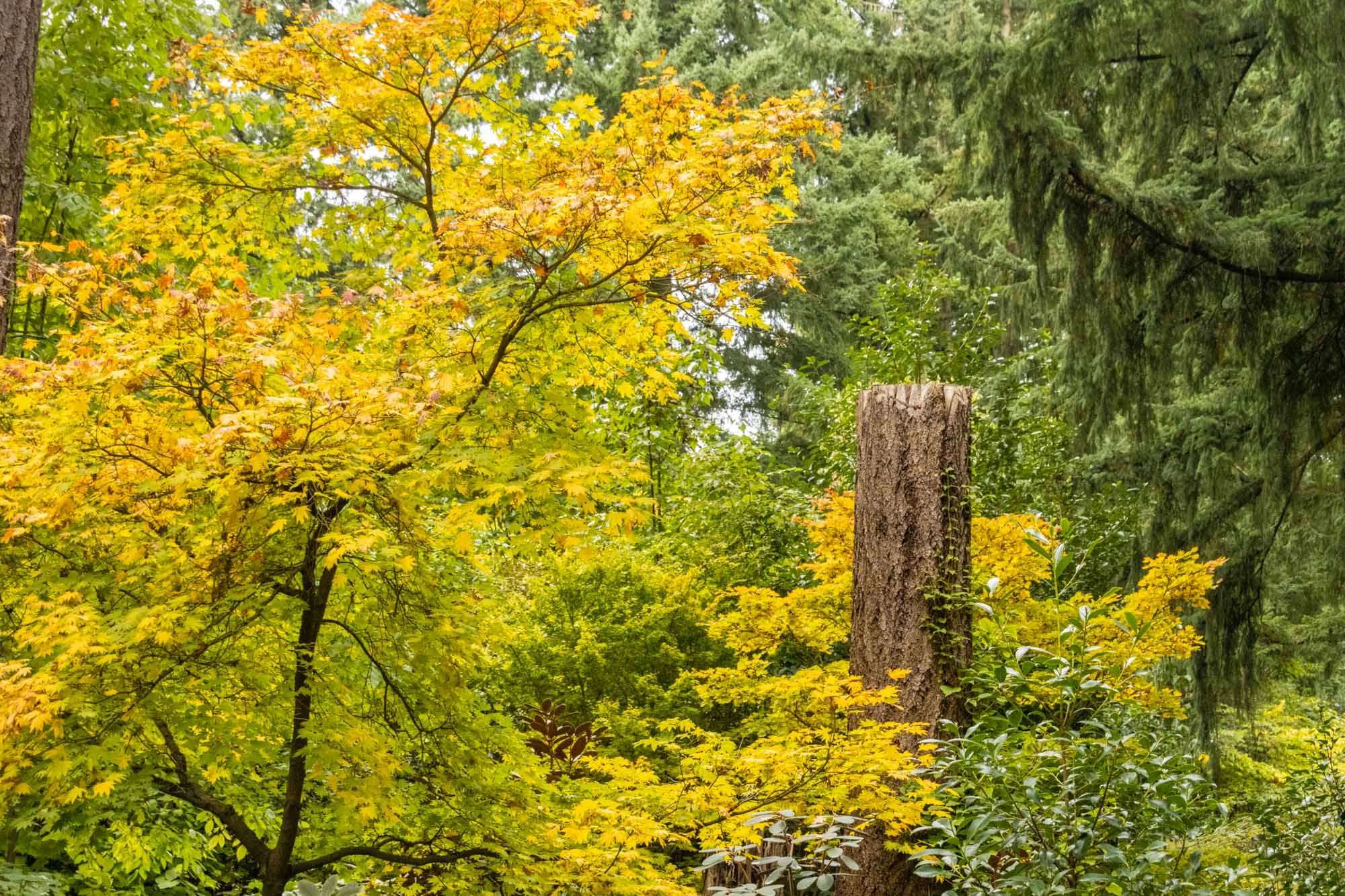
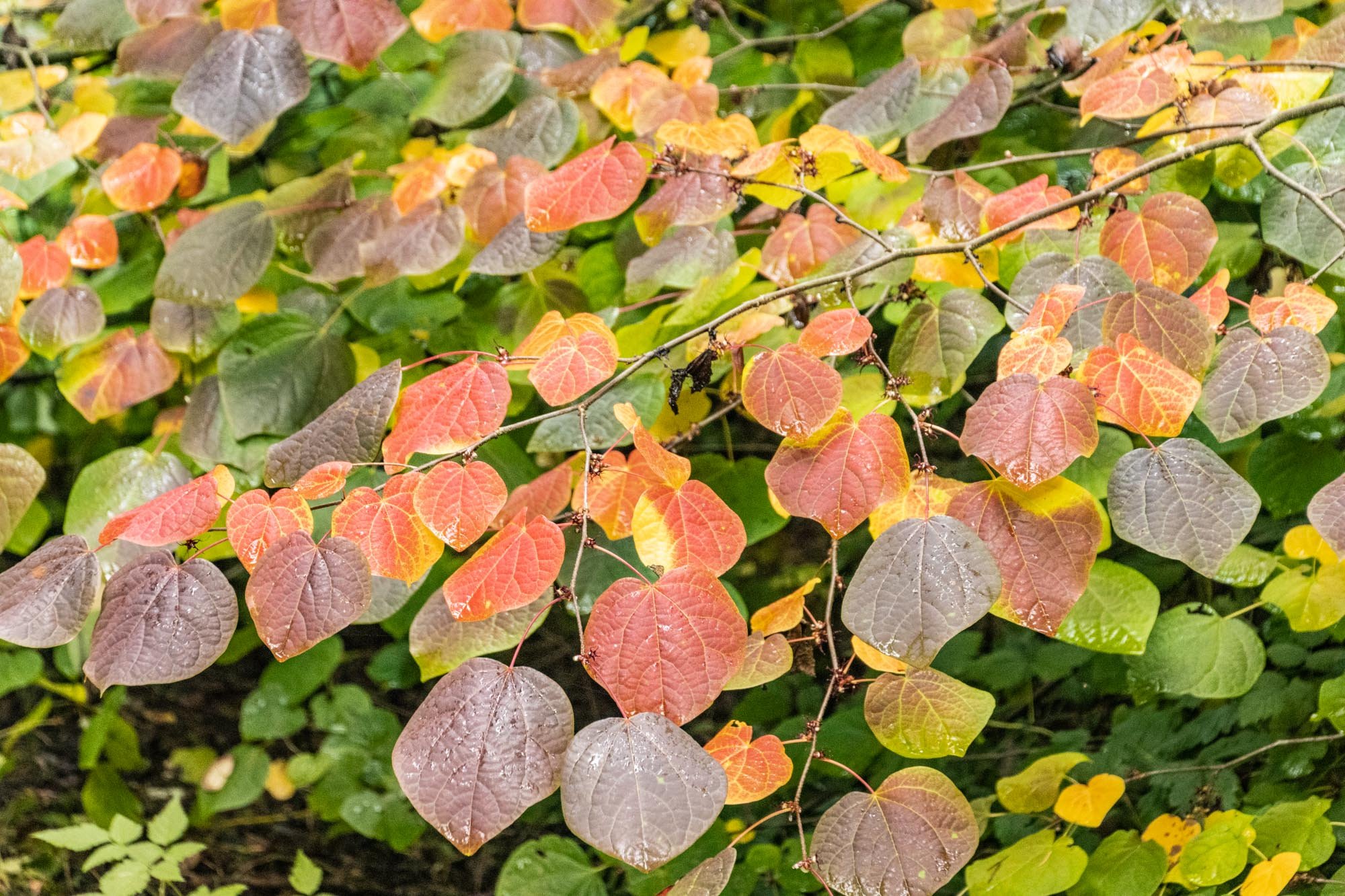
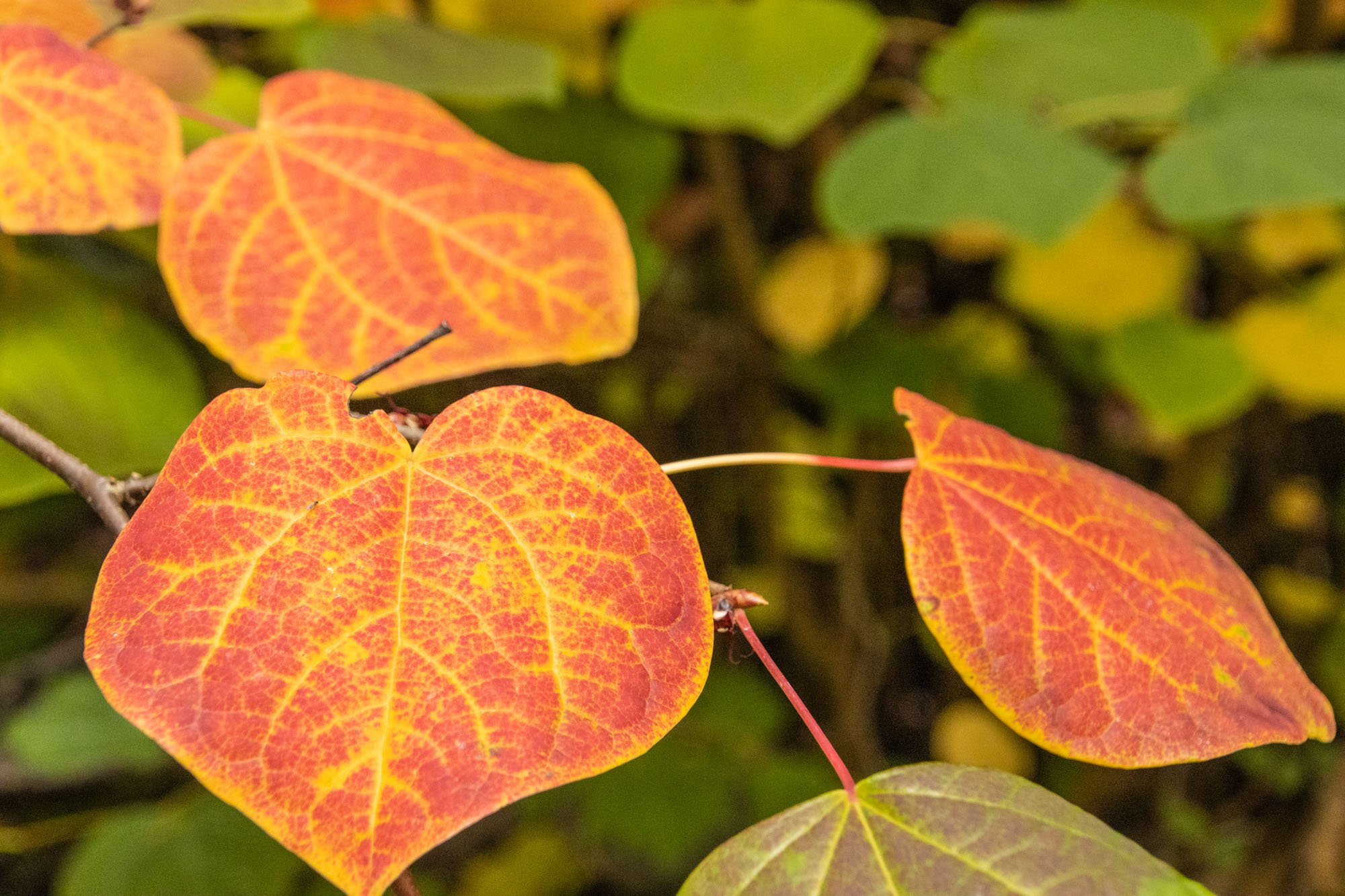
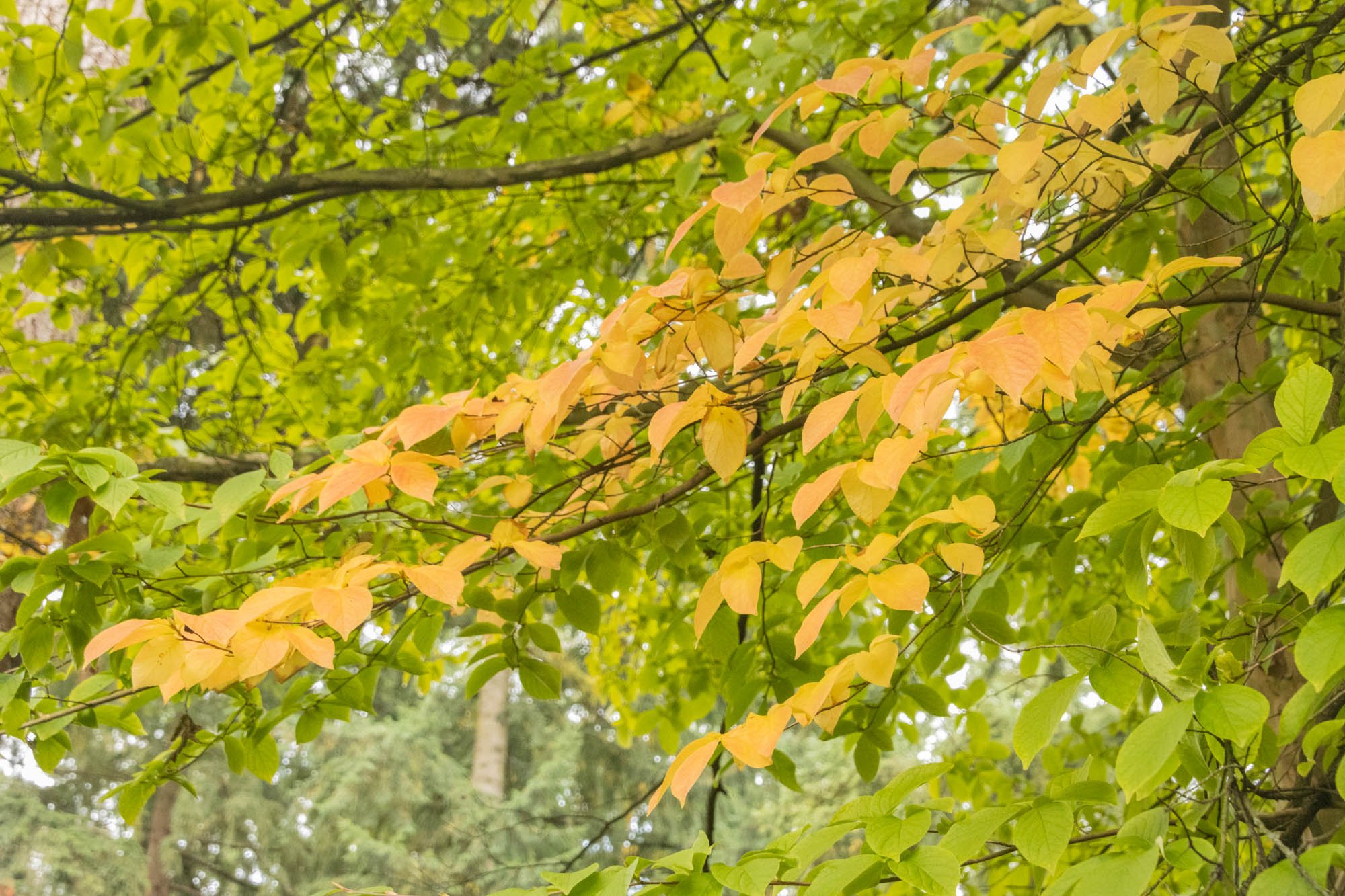
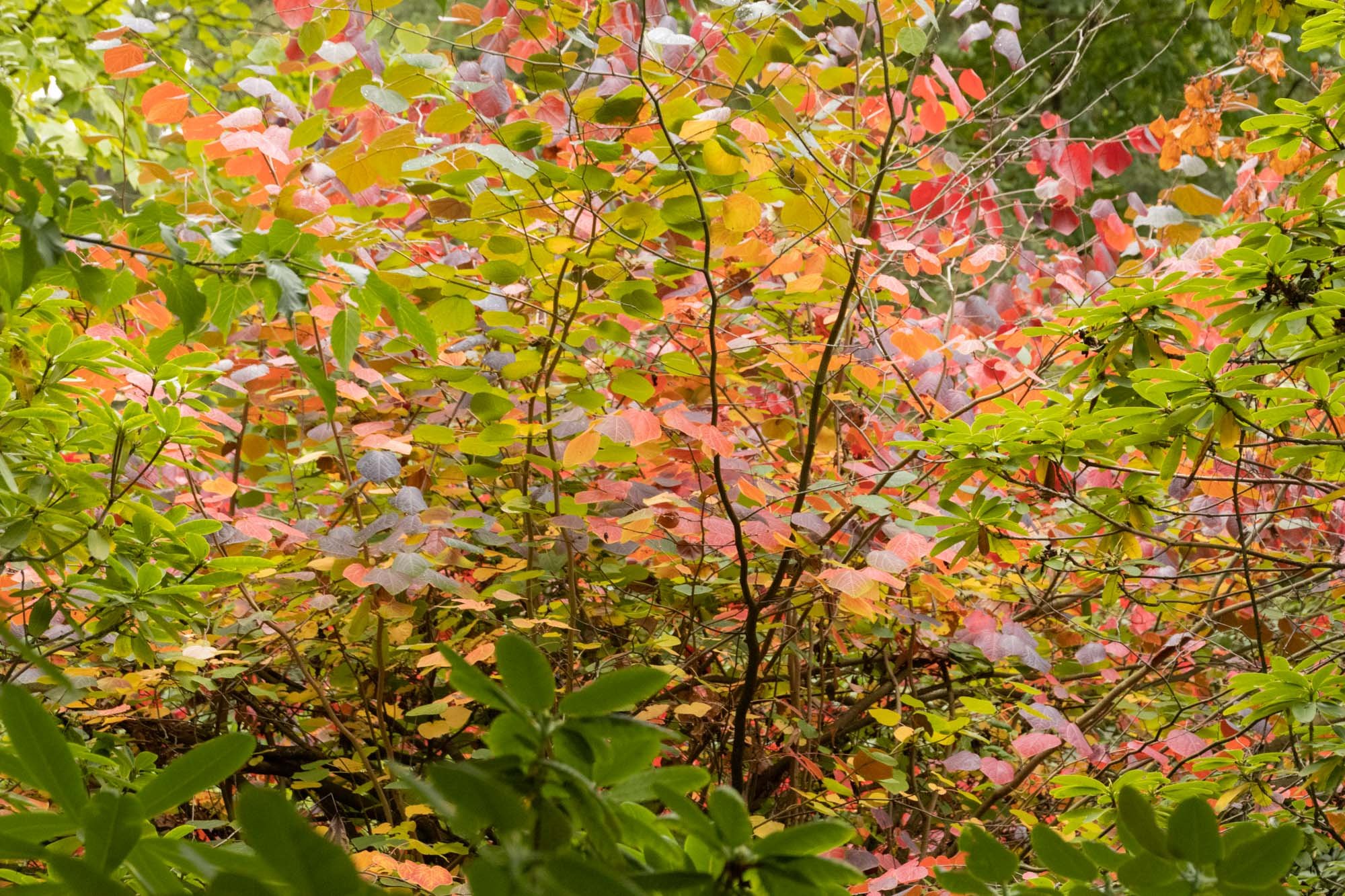
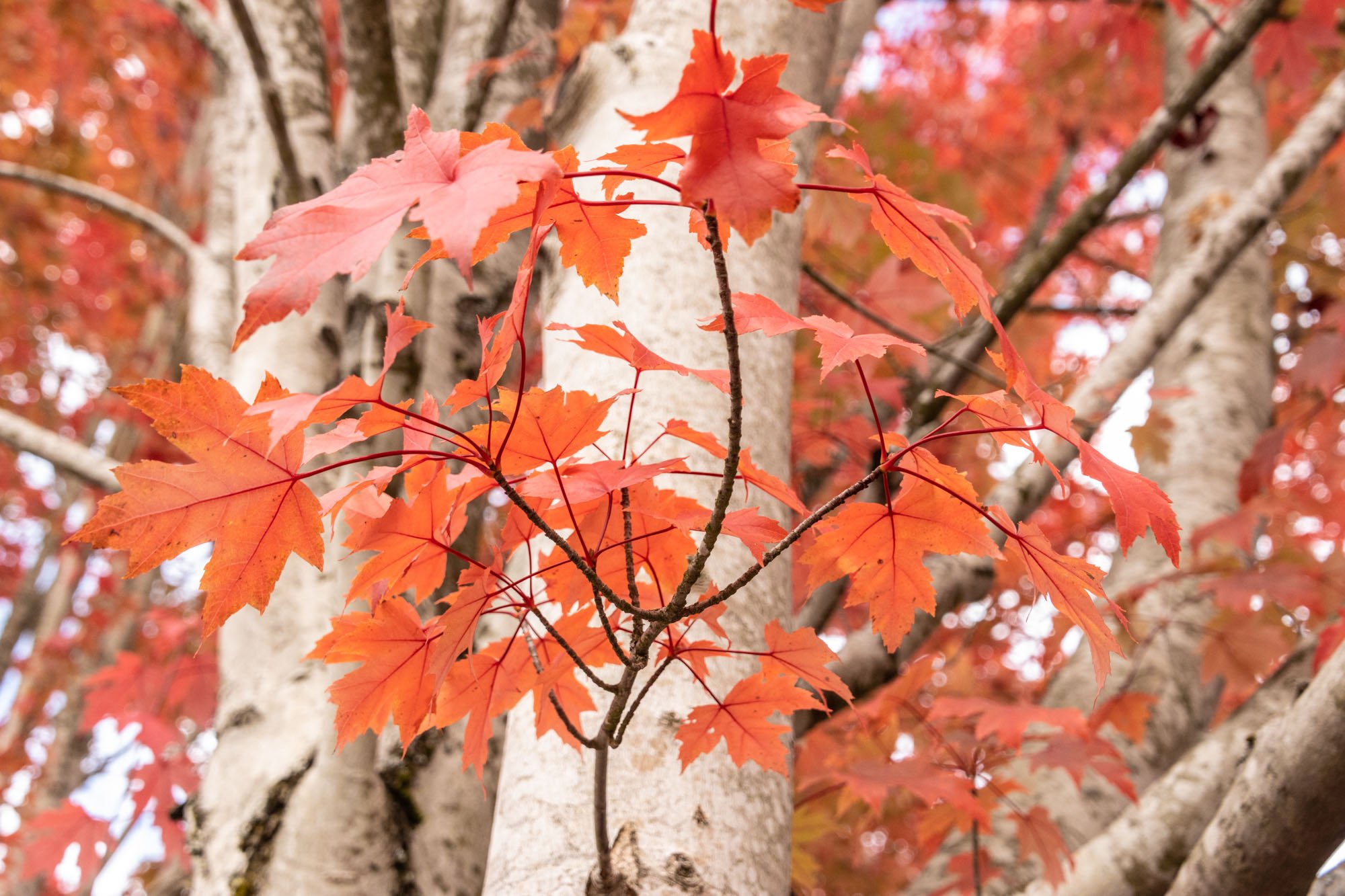
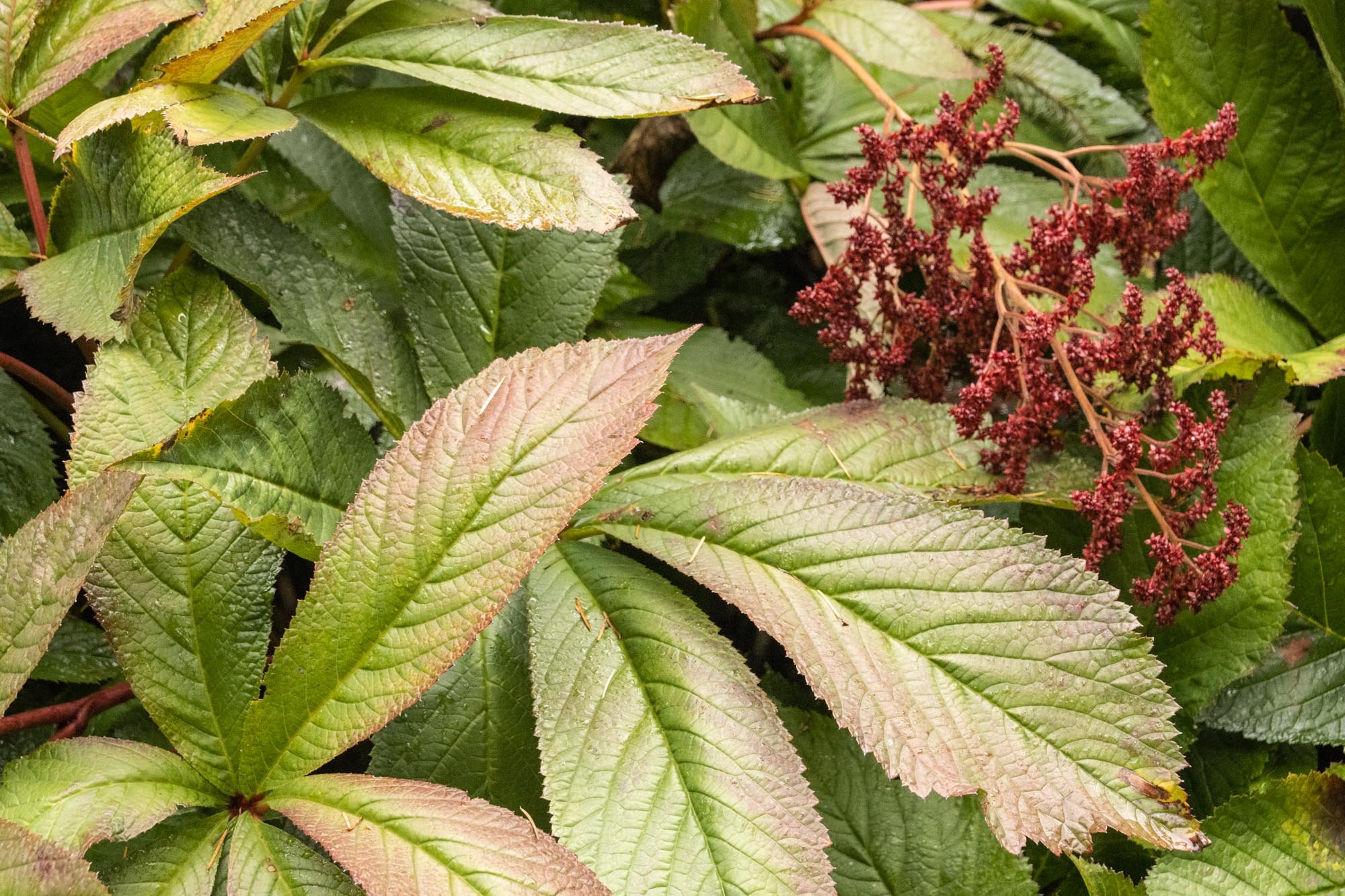
I’d be remiss if I didn’t mention that when turning into my street on my way home from Kubota, my eyes were drawn to the large maple tree sitting between mine and my neighbor’s house. This year the scarlet of the leaves was more vibrant than I ever recall. and its partner had every color of the autumn rainbow. These trees were two of only three trees on the block that enrich our neighborhood this time of year. The grass in front of my house was blanketed with fallen leaves due to a recent wind. It took me back to Newburgh, and the memories that have stayed with me all these years.






